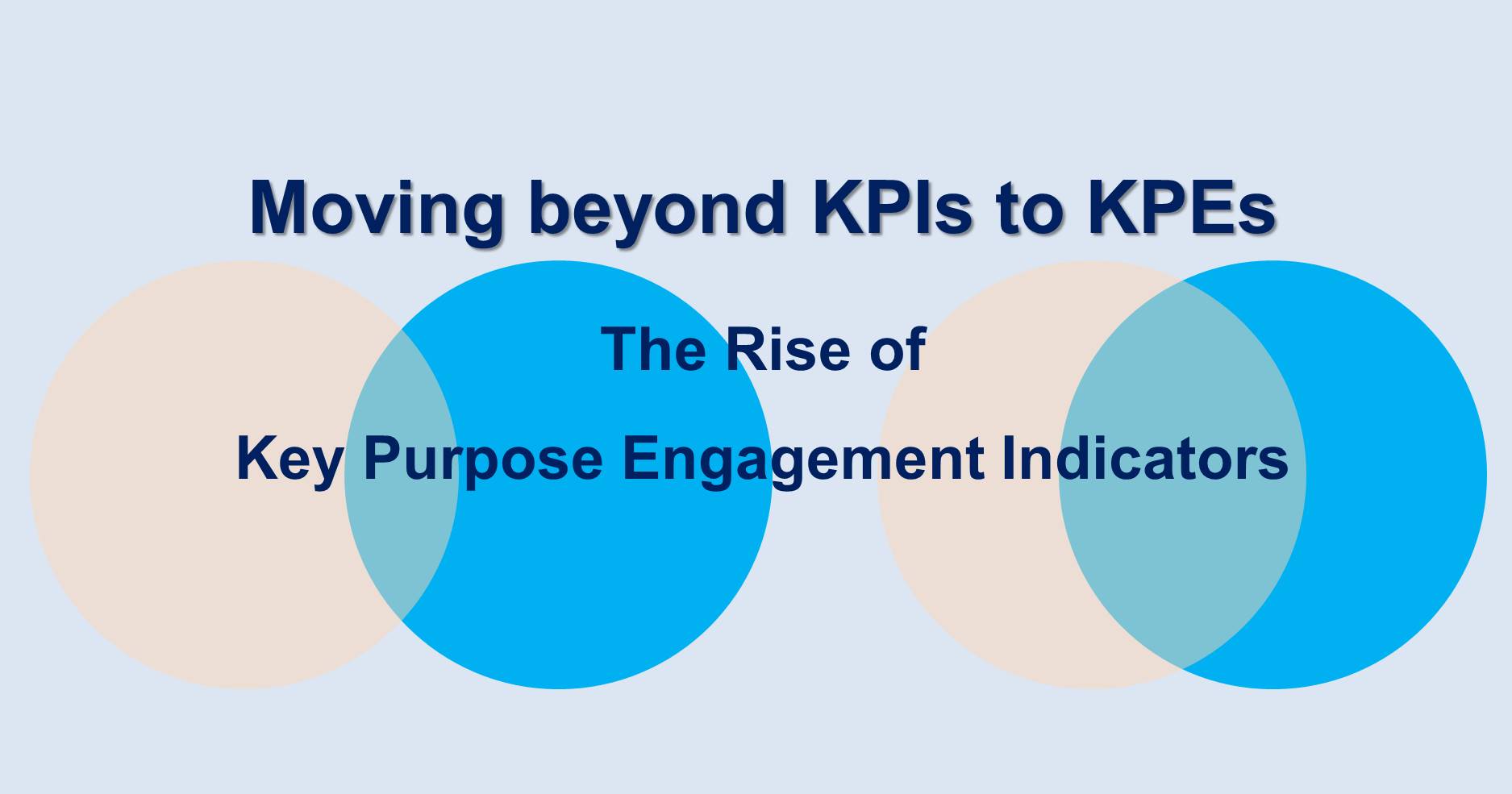Moving Beyond KPIs: The Rise of Key Purpose Engagement Indicators (KPEs)
WHAT is it about?
In the evolving corporate world, traditional Key Performance Indicators (KPIs) are proving inadequate to measure employee engagement or assess organizational success comprehensively. KPIs focus primarily on operational outcomes like productivity, efficiency, and revenue. However, they overlook the deeper motivations driving employees and the core purpose behind organizational goals.
Key Purpose Engagement Indicators (KPEs) represent a shift toward purpose-driven metrics. Unlike KPIs, which focus on what is achieved, KPEs explore why employees perform their tasks and how aligned they feel with the organization’s mission and values. This transformative approach integrates personal purpose with organizational goals, offering a holistic measure of engagement and success.
The Business Case for KPEs: WHY are they important?
- Limitations of traditional KPIs: KPIs have long been the backbone of performance management, but their narrow focus creates several gaps:
- They prioritize outcomes over motivations, neglecting the “why.”
- They drive short-term results at the expense of long-term employee engagement.
- They fail to address critical factors like meaning, purpose, and employee satisfaction, which are key to reducing burnout and turnover.
- Growing need for Purpose driven work: Today’s workforce demands more than just financial compensation. Employees seek purpose, alignment, and meaning in their work. Disengaged employees often cite a lack of connection to the organization’s mission as a primary reason for dissatisfaction.
- Enhanced Engagement and Retention: Organizations with purpose-driven strategies experience higher engagement, lower attrition rates, and stronger alignment with their values. KPEs help bridge the gap between personal motivations and organizational objectives, fostering loyalty and productivity.
How to Implement KPEs: A Strategic Approach
- Redefining Metrics: The Components of KPEs: KPEs require organizations to integrate purpose into engagement metrics. Here are the core components:
- Alignment of Goals: Employees should see a clear link between their personal values and the company’s mission.
- Inclusivity of Purpose: Support diverse employee aspirations within the broader organizational vision.
- Meaningful Contributions: Ensure employees feel their work is impactful and purposeful.
- Engagement Metrics: Move beyond standard surveys to measure passion, motivation, and value alignment.
- Values in Action: Consistently reflect organizational values in decisions and operations.
- Measuring KPEs: Adding Purpose to Existing Methods: Organizations can adapt their current practices to include purpose-focused indicators:
- Enhanced Engagement Surveys: Incorporate questions about employees’ alignment with the company’s mission and how meaningful their work feels. Use open-ended responses to capture personal values.
- Employee Net Promoter Score (eNPS): Measure how likely employees are to recommend the organization based on purpose alignment.
- Absenteeism and Retention Rates: Link absenteeism trends to disengagement with the company’s mission and explore purpose alignment in exit interviews.
- Employee Feedback on Leadership: Assess how effectively leaders communicate and embody the organization’s values.
- Participation in Purpose driven Initiatives: Track employee involvement in volunteering, sustainability, or social impact projects to gauge purpose alignment.
- Practical adjustments for KPE Implementation: When integrating KPEs, consider the following:
- Clarity of Purpose: Ensure employees clearly understand the company’s mission and how it aligns with their roles.
- Flexibility in Metrics: Tailor KPEs to reflect the unique values and aspirations of your workforce.
- Authenticity in Leadership: Leadership must authentically embody and communicate the company’s purpose to build trust and inspire alignment.
The WAY Forward with KPEs
Incorporating KPEs shifts the focus from performance metrics to meaningful engagement. By aligning employees’ personal values with the organization’s mission, businesses can cultivate a more motivated, loyal, and purpose-driven workforce.
Organizations ready to embrace this change will not only experience enhanced employee satisfaction but will also position themselves as leaders in fostering a culture of meaning, innovation, and long-term success. Transitioning to KPEs is not merely a trend – it is a necessary evolution to meet the expectations of today’s purpose-oriented workforce.
